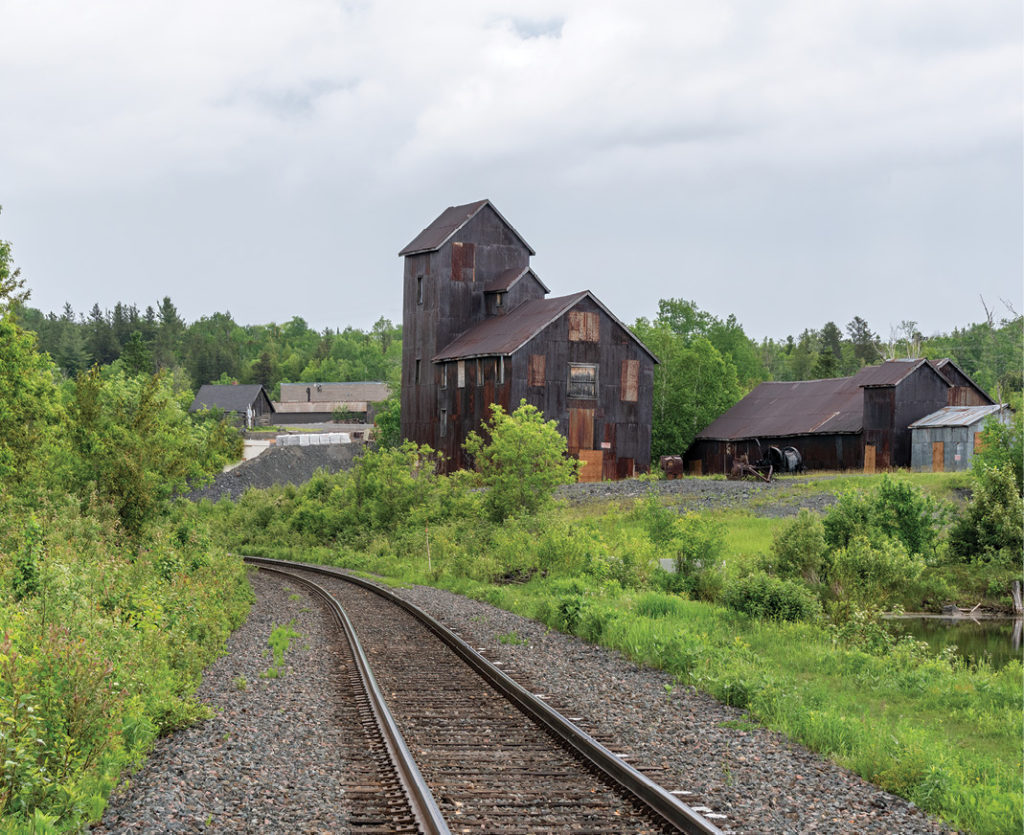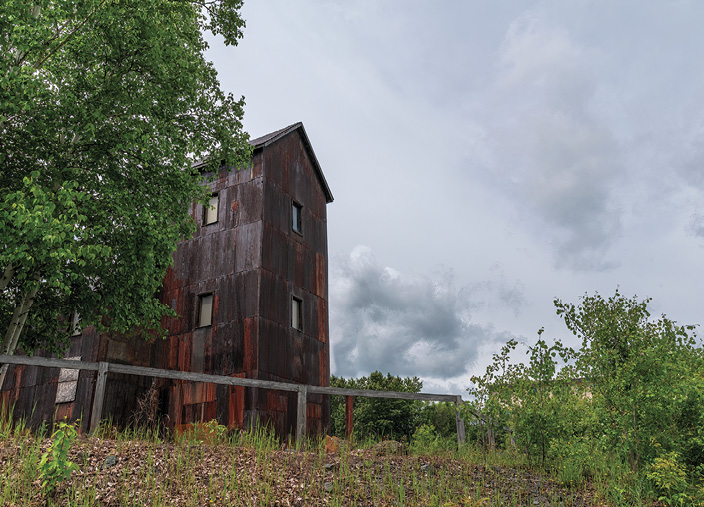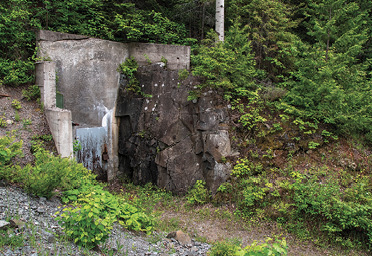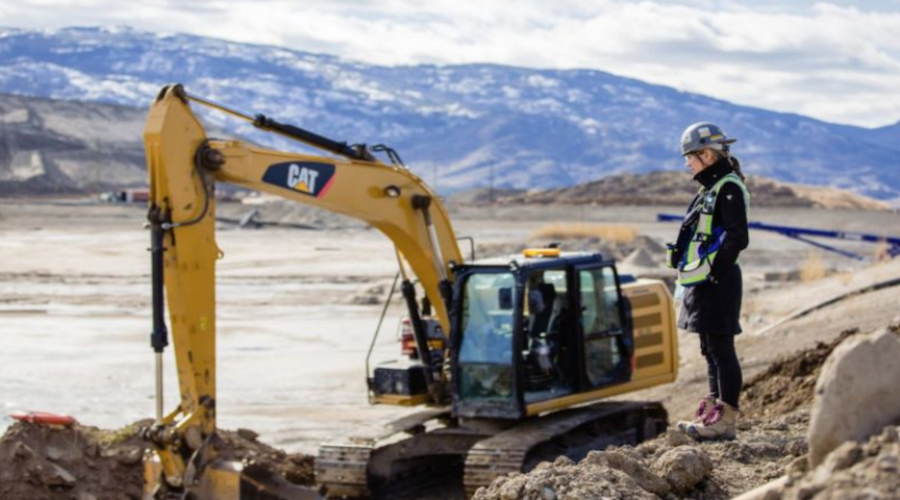
Every mine develops at a different pace. The discovery of a major mineral deposits may create feverish excitement, but an actual mine may remain undeveloped for decades, waiting for a favourable alignment of investors, infrastructure developments, or market conditions. Some mines develop rather suddenly, however, leading to the “rush” conditions that have been romanticized in popular culture. Mineral rushes may lead to riches for some, but they also can create impossibly difficult conditions for miners and their families, including poor housing, hunger, diseases, and high accident rates in the mines.

One of the most rapid and disruptive precious metal rushes in Canadian history occurred at Cobalt, Ont. The first inkling of the rich silver in the area was when two railway construction workers, J.H. McKinley and Ernest Darragh, found silver flakes in rock near Cobalt Lake while working on the Temiskaming and Northern Ontario (T. & N.O.) railway in 1903. Legend has it that the blacksmith Fred LaRose discovered another high-grade silver deposit when he hurled an axe at a fox, the errant throw overturning a rock rich in silver. While Charlie Angus’s recent history of Cobalt suggests the fox incident was a tall tale, the silver was very real. As word of the discovery leaked out, prospectors flooded into the region (an office in nearby Haileybury issued 6,000 prospecting licenses by the autumn of 1905). By early 1906, the population of Cobalt had risen to 1,500, and 16 mines had opened in the surrounding region.

The result was widespread chaos. Historians Doug Baldwin and David F. Duke have highlighted how social and physical planning for the new town of Cobalt was almost non-existent. Cobalt’s residents built streets, houses, and shops in a haphazard way, while the mining companies exploited the silver at the surface through extensive trench networks that sometimes ran through the town. The mining companies retained surface and sub-surface rights to much of the town’s land base, however, and thus could evict those whose buildings stood in the way of mine expansion. When Coniagas Mine announced plans to mine in northwest end of Cobalt, displacing not only residents but also established businesses, the town of Cobalt took legal action. In 1910, a court ruled in favour of Coniagas’ mineral rights but gave the town control over streets and highways. The legal compromise was entirely in keeping with the reality of life in Cobalt, where commercial, residential, and industrial development all coexisted in an uneasy compromise with one another.
The poor planning of Cobalt’s infrastructure carried real consequences for residents’ health and safety. The lack of adequate sewage meant that residents used poorly constructed privies for their toileting needs, and workers at the mines simply relieved themselves wherever it was convenient. With no plans in place for managing surface runoff, water leaked into and from the shallow pits of human waste and mining trenches, carrying a dangerous brew of biological pathogens and heavy metal contaminants that eventually found its way into nearby lakes. In 1905, the Provincial Board of Health predicted a disaster, noting that “garbage, wash water, urine, and feces all mixed together in frozen heaps out in the open. The cold has been steady so far and all is frozen, but when the thaws come, the accumulations will all be washed in the valleys and the lake, polluting water sources. If nothing is done, then in all human probability, there will be a severe outbreak of disease in and about the settlement.” Sure enough, in July 1909, the poor sanitary situation resulted in a typhoid epidemic that sickened 1,100 residents and claimed the lives of 67 people. It took two more years before the town finally managed to build an adequate water and sewage system.
Early in that same disastrous July of 1909, a fire also spiraled out of control in Cobalt. While the blaze had started in a Chinese restaurant, with the New York Times reporting that “feeling against all Orientals is strong, and it is feared they may be driven from the district,” the real reason the fire has spread was the lack of running water and firefighting equipment. By the time it burned out, the fire destroyed 150 buildings and forced 3,000 people from their homes. A few residents went on a looting rampage (the New York Times suggested they were “carrying off everything in sight”), but most displaced residents ended up sheltered in the local theatre and roller rink. It was here that the typhoid outbreak likely gained its foothold, compounding one disaster with another as residents desperate enough to drink contaminated water lived in tightly packed conditions ripe for human-to-human transmission of the disease.
It is perhaps not surprising that the deadly chaos aboveground extended into the mines, especially after 1907 when Cobalt’s mining companies began to abandon trenching and sink shafts into the underground. Ontario’s Bureau of Mines noted in its annual report for 1909 that 30 of 47 fatalities in Ontario the previous year had occurred in one of Cobalt’s mines. This number represented a significant increase from the 22 fatalities recorded in 1907 and a remarkable upsurge from 1906 when there had been only 11 mining deaths in the province. E.T. Corkill, Ontario’s Inspector of Mines, argued “there is no doubt that in a boom camp such as Cobalt has been in the last three years, there is a spirit of feverish speculation and unrest that tends to the disorganization, lack of discipline, and loss of efficiency of both the men and those in charge.” Miners died owing to a variety of causes: falling down a shaft, riding on an unsafe ore bucket, or breakage of the cable attached to a cage. Corkill noted that the most prolific cause of accidents was explosives, with miners often striking unexploded dynamite while they mucked ore after a blast or drilling into old holes to save time (sometimes on the workers’ own initiative, and sometime under pressure from foremen). Although the safety record at Cobalt’s mines improved over time, 114 miners died in the region between 1905 and 1913, 41% of all fatalities in Ontario’s mines.
Cobalt’s silver rush was not without its successes. Developed only five years after the Klondike gold rush, Cobalt was a globally significant silver producer that proved precious metals could be found in the more eastern reaches of the Canadian Shield. Cobalt drew investment dollars, prospecting talent, and mining expertise to northern Ontario, and then exported these same things to stunning new precious metal finds in Timmins, at Kirkland Lake, Quebec’s valley of gold, and Yellowknife. But even if Cobalt deserves its pride of place as one of the most important mining regions in Canadian history, it is also important to remember the extreme challenges and danger encountered by the miners who lived and worked there.
John Sandlos is a professor in the History Department at Memorial University of Newfoundland and the co-author (with Arn Keeling) of “Mining Country: A History of Canada’s Mines and Miners,” published by James Lorimer and Co. in 2021.




